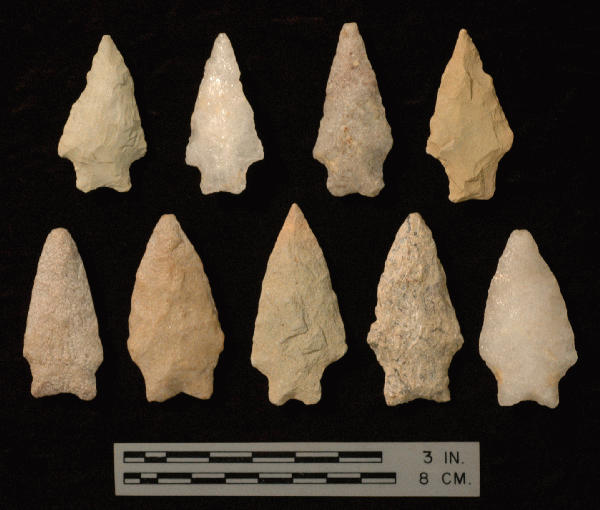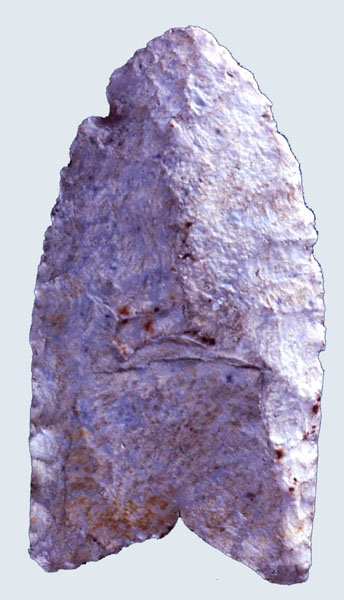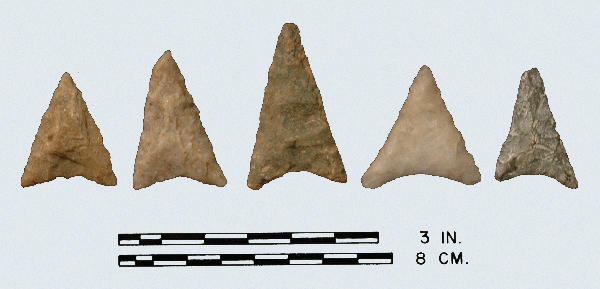
Small Savannah River: Top Row: tuff, quartz, quartzite, tuff; Bottom Row: quartzite, quartzite, rhyolite, rhyolite, quartz.
Type Square Late-Archaic
Defining Attributes
Small Savannah River is a medium point with a narrow, rectangular stem, straight or excurvate base, and narrow triangular blade. The corners of the base are slightly rounded.
Chronology
The Small Savannah River point dates to the Late Archaic period, 2100 to 1200 BCE. Potter and Waselkov (1982) have dated Holmes points, a similar point, on the Coastal Plain of Virginia to between 2100 to 1500 BCE.
Description
- Blade: The triangular blade generally with excurvate lateral edges. Some points may be asymmetric due to reworking of the lateral edges.
- Base: The base is either concave, straight or excurvate and the corners of the base are slightly rounded.
- Size: The length ranges from 43 to 57 mm. Width ranges from 22 to 34 mm. Thickness ranges from 8 to 11 mm.
- Technique of manufacture: Percussion flaking was the primary method of manufacture, with several points exhibiting pressure retouching of the blade.
Discussion
Dent (1995) suggests that the Holmes type should be seen as a northern small derivative of the Savannah River type. Dent notes that although a formal description of the Holmes type has never been published, it is the result of research in the Potomac Valley by McNett in the 1970s. McAvoy (1997) describes a Small Stemmed point excavated above the Savannah River points, in a zone identified as transitional Late Archaic, at the Fannin Site along the Nottoway River. This would place the point later than the dates obtained by Potter and Waselkov.
Defined in Literature
The Small Savannah River type was formally defined by Oliver (1981) from examples from the North Carolina Piedmont.
References



